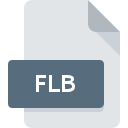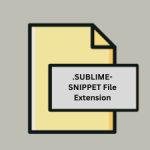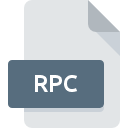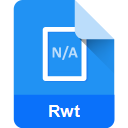.FLB File Extension

FileMaker Pro Label File
| Developer | FileMaker |
| Popularity | |
| Category | Page Layout Files |
| Format | .FLB |
| Cross Platform | Update Soon |
What is an FLB file?
.FLB file extension is associated with FileMaker Pro, a powerful database management solution developed by Claris International.
Specifically, .FLB files store label layouts within FileMaker Pro, facilitating the creation and customization of labels for various purposes.
This article delves into the origins, structure, uses, advantages, disadvantages, conversion methods, and compatibility aspects of .FLB files.
More Information.
The history of .FLB files traces back to the evolution of FileMaker Pro itself, which began in the mid-1980s.
Over the years, FileMaker Pro has evolved from a simple database tool to a robust platform supporting various file types, including .FLB files for label creation.
The integration of label printing capabilities into FileMaker Pro marked a significant enhancement in its utility for users across different sectors, from small enterprises to larger organizations requiring scalable database solutions.
Origin Of This File.
FileMaker Pro, originally developed by Nashoba Systems and later acquired by Claris, has long been recognized for its versatility in database management and application development.
The introduction of .FLB files aimed to provide users with a straightforward method to design and print labels directly from their databases.
This functionality streamlined label creation processes, catering to both individual users and businesses needing efficient label management solutions.
File Structure Technical Specification.
FLB files are primarily structured to contain layout information for labels designed within FileMaker Pro. They store details such as label dimensions, text formatting, graphics placement, and data fields linked to the database records.
These files often include metadata that define printing parameters, ensuring labels are generated accurately based on user-defined settings within the FileMaker Pro environment.
Technical specifications of .FLB files typically include:
- Format: Binary file format optimized for label data storage.
- Compatibility: Designed to work seamlessly with FileMaker Pro versions that support label printing functionalities.
- Metadata: Contains XML or proprietary markup defining label layout attributes.
How to Convert the File?
Converting .FLB files may be necessary to ensure compatibility across different applications or newer versions of FileMaker Pro. Conversion methods include:
- Exporting: Export label data from FileMaker Pro in a more universal format like PDF or CSV, suitable for use in other software applications.
- Importing: Import label data from .FLB files into newer versions of FileMaker Pro, ensuring compatibility with updated features and functionalities.
Advantages And Disadvantages.
Advantages:
- Integration: .FLB files integrate smoothly with FileMaker Pro databases, leveraging existing data for label creation.
- Customization: Users can customize labels extensively, adjusting layouts, fonts, and graphical elements to suit specific branding or functional requirements.
- Efficiency: Streamlines label creation and printing processes, reducing the time and effort required to produce professional-looking labels.
Disadvantages
- Dependency: Requires FileMaker Pro software to create, edit, and print .FLB files, limiting accessibility without the application.
- Compatibility Issues: Older .FLB files may not be fully compatible with newer versions of FileMaker Pro, necessitating updates or conversions.
- File Size: Large databases with extensive label layouts can result in sizable .FLB files, potentially affecting storage and transfer efficiency.
How to Open FLB?
Open In Windows
- FileMaker Pro: Install FileMaker Pro on your Windows PC. Double-click the .FLB file, and it should open directly within FileMaker Pro.
- Third-Party Applications: Some third-party software tools may support .FLB files, particularly those designed for database management or label printing. Ensure compatibility before attempting to open the file.
Open In Linux
- FileMaker Pro via Wine: While FileMaker Pro is not natively available for Linux, you may use Wine (a compatibility layer) to run the Windows version of FileMaker Pro. Install Wine, then install FileMaker Pro, and open the .FLB file through this setup.
- Cross-Platform Tools: Explore cross-platform database management tools that support .FLB files or provide import capabilities. These tools may offer limited functionality compared to FileMaker Pro on Windows or MacOS.
Open In MAC
- FileMaker Pro: FileMaker Pro is fully compatible with macOS. Simply double-click the .FLB file, and it should open directly within FileMaker Pro.
Open In Android
Opening .FLB files on Android devices are not straightforward as FileMaker Pro is not available for Android. You may need to:
- Convert: Convert the .FLB files into a format compatible with Android-supported apps, such as PDF or CSV, using FileMaker Pro on a desktop.
- Third-Party Apps: Use third-party apps that can handle file conversion or support database file formats. Ensure these apps are reliable and secure before transferring and opening .FLB files.
Open In IOS
- FileMaker Go: Use FileMaker Go, the iOS version of FileMaker Pro, available on the App Store. Transfer the .FLB file to your iOS device via iCloud, email, or another method supported by iOS, then open it directly within FileMaker Go.













